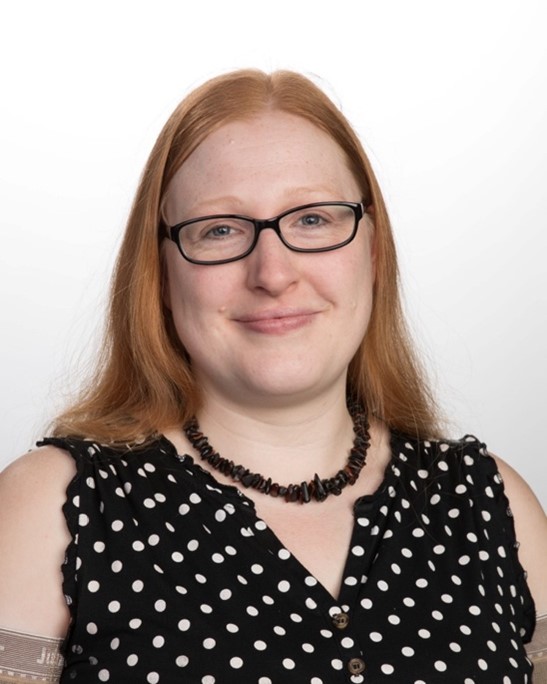Leila Basti (United Arab Emirates)
Leila Basti is a Laureate Engineer in Agronomy, specialized in Marine Environment and Aquatic Resources (Tunisia). She obtained her Master of Marine Science and Doctor of Marine Science from Tokyo University of Marine Scienced and Technology (TUMSAT) (a MEXT Scholar, Japan). She was a Strategic Young Researcher at TUMSAT and an International Researcher at the National Institute of Fisheries Science (Fisheries Research and Education Agency; Ministry of Agriculture, Forestry and Fisheries, now under MEXT). She was then appointed Assistant Professor in Ocean Science at TUMSAT, under a governmental program, funded by MEXT, TUMSAT and JSPS. In 2022, she was appointed Assistant Professor of Ocean Science, Fisheries and Aquaculture at the Department of Integrative Agriculture, College of Agriculture and Veterinary Medicine, United Arab Emirates University. Leila Basti research interests span the fields of coastal ecosystems, biodiversity, climate change, Aquaculture, fisheries, and food and water security. She has been studying the effects of several toxic and high biomass HAB on aquatic organisms, including Dinophysis, Alexandrium and ichthyotoxic HAB. She is currently conducting research on mixed blooms of HAB and their impacts on fisheries and aquaculture within the context of climate change and HAB in extreme environments. She is also subhead in a food security project in UAE and is building research on sustainable aquaculture production systems, integration of AI in aquaculture production, IMTA as well as sustainable feed in aquaculture (including extremophile microalgae) to improve aquaculture-environment interactions. Dr Leila Basti is on the editorial board of the journals Harmful Algae and Reviews in Aquaculture.

Laura Biessy (New Zealand)
Laura Biessy is an early career scientist based at the Cawthron Institute in Nelson. Her research focuses on aquatic ecology and the application of molecular tools to understand these complex environments and enable the protection of human health. She specializes in marine and freshwater harmful algal blooms but has a particular interest in marine biotoxins present in shellfish. Her PhD research focused on tetrodotoxin, and used a wide range of molecular, analytical, and laboratory-based studies to investigate the source and transmission of the toxin in New Zealand shellfish. Since finishing her PhD in 2021 she has worked as a research scientist at Cawthron where she leads components of the New Zealand government funded Seafood Safety research platform, in particular the study of marine cyanobacteria and the ecology of harmful algal blooms impacting fish and shellfish. Laura also has a special interest in supporting young scientists and established an early career researcher group to provide a support network and career development opportunities for scientists in New Zealand.
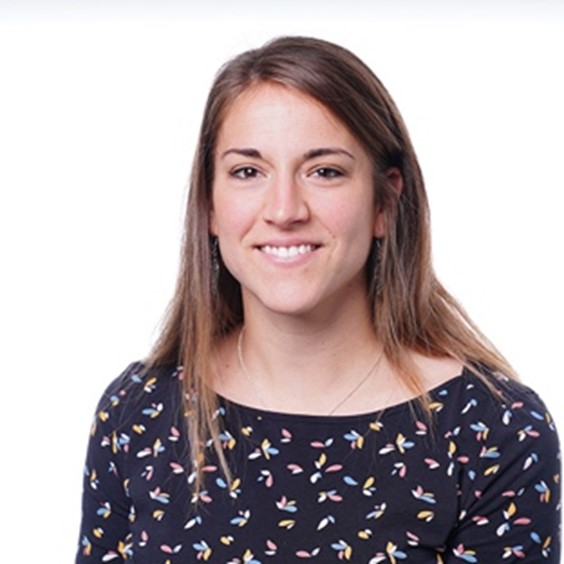
Christine Edwards (United Kingdom)
Christine has over 30 years’ experience in biotoxin research in the UK with >10 years’ industrial experience, with the rest of her career in Universities (University College London, University of Dundee and Robert Gordon’s University (RGU), Aberdeen). As Co-Director of CyanoSol Research Centre at RGU, she has pioneered the study, production and curation of the World’s largest portfolio of cyanotoxins made available to the global scientific community through industrial collaboration with Enzo Life Sciences. This expertise, along with bespoke provision for algal culturing (>1200 L), downstream processing, purification (mass guided prep chromatography) and characterisation of biotoxins (LC-MS) at RGU has underpinned the delivery of multiple UK Government Funded Research Fund projects, developing advanced oxidation and nature-based water treatment solutions for cyanotoxins (working with researchers and stakeholders in Brazil and Sri Lanka) in addition to working extensively with cyanotoxin research groups in Asia providing capacity building for their toxin research. Professor Edwards has extensive experience in method development for trace analysis of marine and freshwater biotoxins in complex sample matrices (shellfish, water, animal/fish tissues and cells) working closely with UK shellfish industry. Christine has supervised 14 postgraduate students to completion with almost 100 publications in peer reviewed journals
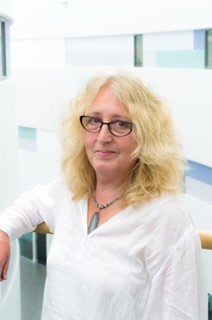
Henrik Enevoldsen (Denmark)
Henrik Enevoldsen is Head of IOC Science and Communication Centre which is hosted by the University of Copenhagen, Denmark. He has a background in aquatic ecology and has for more than 25 years worked with development and implementation of international research and capacity building on aspects of harmful algae and marine science in general. He coordinates several international scientific working groups and regional networks in marine science. He is part of the team in the IOC Secretariat working on the development of the UN Decade for Ocean Science for Sustainable Development.
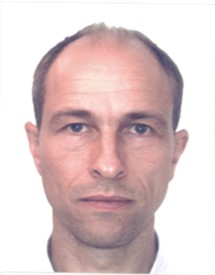
Esther Garcés (Spain)
Dr. Esther Garcés is a Senior Researcher at the Marine Science Institute in Barcelona, where she leads the Littoral Biological Processes research group. Her team investigates the dynamics of the harmful algal blooms, and explores underlying biological mechanisms of this phenomena. Dr. Garcés has contribute significantly to phytoplankton ecology, focusing on species diversity within plankton communities, novel theories on species introduction and expansion and the interplay between physical and biological factors in sustaining algal blooms. Additionally, her research explores to the impact of parasitism on harmful algal species, thereby influencing the dynamics of plankton populations.
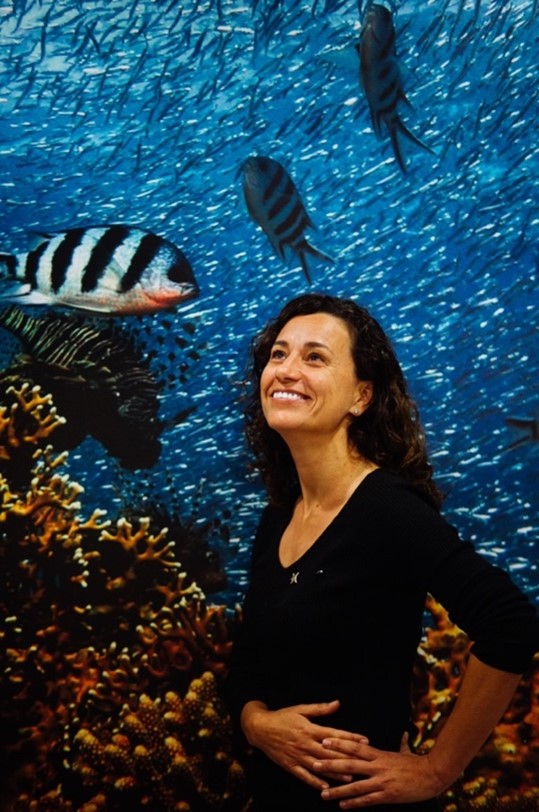
Tim Harwood (New Zealand)
Dr. Tim Harwood is a marine toxin chemist based at the Cawthron Institute in Nelson. He co-leads the New Zealand government funded Seafood Safety research platform and is the Deputy Director of the New Zealand Food Safety Science and Research Centre. His specialist areas of expertise include natural product isolation and structural elucidation, analytical method development and validation. Tim completed his post-graduate degrees at University of Canterbury and University of Otago, before undertaking a postdoc at Sydney’s ANZAC Research Institute. Since returning to New Zealand and joining Cawthron in 2010, his research interest has been on marine toxins that accumulate in seafood. His recent focus has been on the analysis of saxitoxin-group toxins and the toxins implicated in ciguatera fish poisoning. He has authored 85 peer-reviewed articles in high-ranking journals and produced >20 reports for government and industry clients. He leads a team of analytical chemists, working together to make an important contribution to marine biotoxin research and management both in New Zealand and internationally.
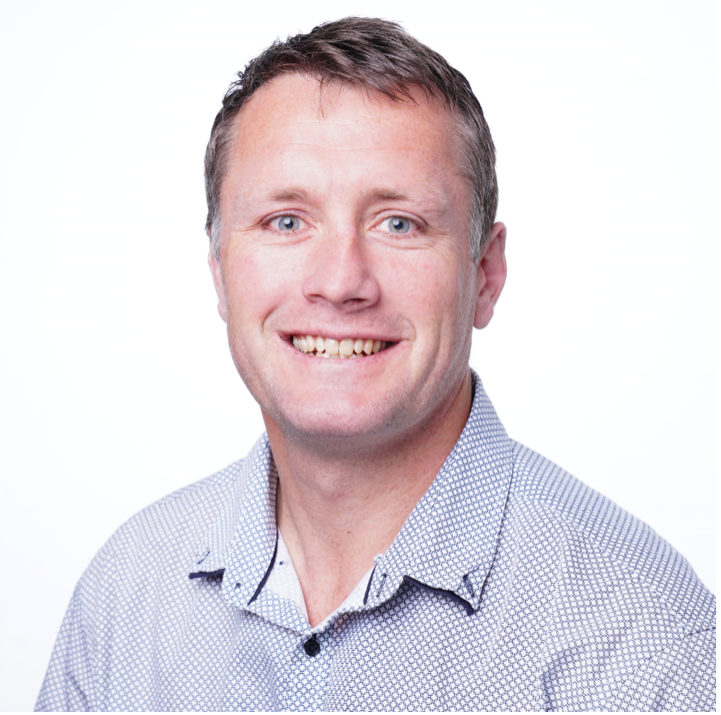
Philipp Hess (France)
Initially focusing on domoic acid and saxitoxins in UK (1998). In 2001, implemented chemical testing for lipophilic toxins in parallel to mouse bioassays (IE). Subsequently, toxin isolation and reference materials for official control, proficiency testing for shellfish toxins within QUASIMEME, method validation and standardisation for domoic acid and lipophilic toxins (UK-FSA, EU-project BIOTOX, ECVAM, CEN, INAB, AFNOR, AOAC Presidential Task Force for Phycotoxin Methods). He also contributed to risk evaluation through WGs (Irish, UK & French Food Safety Agencies, EFSA, FAO/IOC/WHO, Codex alimentarius). Since 2008, P. Hess continues studies on phycotoxins at Ifremer (FR). Research interests cover the biodiversity and ecological role of toxic algae and detection, chemistry, diversity and impact of phycotoxins on marine ecosystems and human health. The laboratory performs algal culture for the production of purified toxins and generic methods for biodiscovery, based on miniaturised bioassays and mass spectrometry. He teaches a course on phycotoxins at Nantes University and is the adjunct director of the regional Research Federation on ocean & coastal activities (IUML). Since 2011, he contributes to communicating science to policy stakeholders through the European Science Foundation Marine Board WG “Oceans and Human Health”, has assisted the EU-FVO (Food and Veterinary Office) as expert at inspections of EU and third countries for compliance of shellfish production with EU regulations, and he represents France on the Intergovernmental Panel on Harmful Algal Blooms (IOC-UNESCO). Since 2013, he directs the French research network on toxic algae and their toxins (PHYCOTOX).
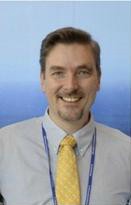
Ichiro Imai (Japan)
Ichiro Imai, PhD in Agricultural Science from Kyoto University (1989), is a Professor Emeritus at the Hokkaido University since 2018. He joined the Nansei National Research Institute, Fisheries Agency of Japan, in 1980. He moved to Kyoto University in 1994, and to Hokkaido University in 2009. Imai’s major is Harmful Algal Bloom (HAB) science including Life cycle of microalgae, Physiology and ecology of harmful algae, Mitigation strategies of HABs. Imai is currently the chair of ICHA 20 Hiroshima 2023, the chair of the Seto Inland Sea Wide Area Fisheries Coordination Committee (Fisheries Agency), and the chair of Osaka Sea Area Fisheries Adjustment Commission (Osaka Prefecture). His main studies include the life cycle strategies of the fish-killing raphidophyte Chattonella and Heterosigma akashiwo in temperate coastal sea and the bloom dynamics in relation with life cycle, cyst physiology, and seed-population dynamics. In addition, he focuses in the biological control of HABs utilizing nutrient-competing diatoms through germination of resting stage cells in bottom sediments by artificial perturbation and lifting of sediments in coastal sea. Actual applications in 2020 - 2023 in Osaka Bay succeeded in suppressing the occurrences of Alexandrium blooms. Finally, he centers his attention to the prevention of HABs occurrences by using of algicidal bacteria inhabiting on the surface of seaweeds and seagrasses. Restoration of seaweed beds and seagrass beds would contribute as the environmentally friendly biological control of HABs utilizing these bacteria.
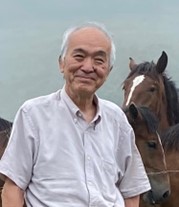
Mitsunori Iwataki (Japan)
Mitsunori Iwataki is an associate professor at Graduate School of Agricultural and Life Sciences, University of Tokyo, and previously worked in Nagasaki University, University of Copenhagen, and Yamagata University, after his completion of Ph.D. course at University of Tokyo in 2002. He is interested in taxonomy and phylogeny of microalgae, especially marine harmful dinoflagellates, and published taxonomic and phylogeographic research on the marine dinoflagellates, such as the Amphidomataceae, Heterocapsaceae, Suessiaceae, Gymnodiniales, and the raphidophyte Chattonella in the Asian Pacific, collaborating with HAB researchers in East Asia and Southeast Asia, under IOC/WESTPAC-HAB, EASTHAB, and PICES S-HAB. He participates in the IOC-UNESCO Intergovernmental Panel on Harmful Algal Blooms (IPHAB) from Japan, and a member of IPHAB Task Team on Algal Taxonomy.
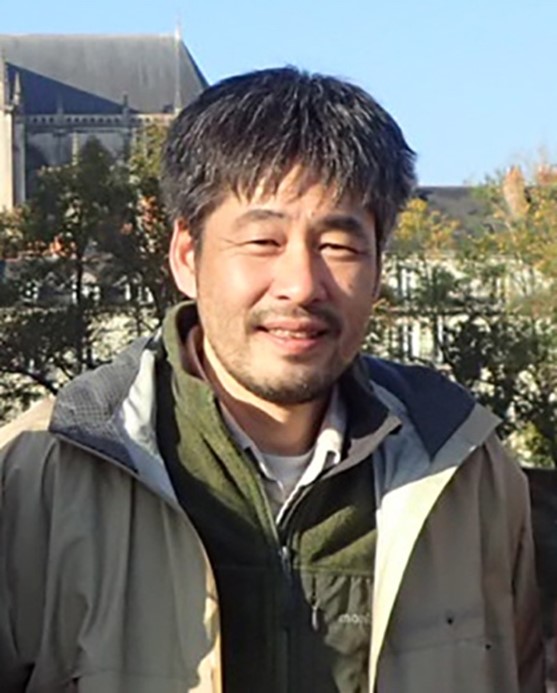
Ian Jenkinson (China, France)
After his PhD on Water Movement and Plankton at Belfast, Northern Ireland, in 1975 Ian moved to the Oceanography Department, University College Galway, Republic of Ireland also created an independent research agency. In 1984 became assistant professor at the University of Nice, France. In 1988, he was a researcher on turbulence, rheology and HABs at the Alfred-Wegener-Institute (AWI), Germany, then in 1995 at the Danish Institute for Fisheries and Marine Research (HØK). From 1998 to 2001, he continued this research both at HØK and at the "Anton Dohrn" Zoological Station, in Napoli, Italy. From 2001 to 2004, Ian was Editor in Chief of the Journal of Plankton Research. In 2008, Ian lectured and mentored at Kyushu University, Japan. Then, from 2010 to 2018 Ian worked in Qingdao, China, at the Institute of Oceanology Chinese Academy of Sciences, as Research Professor and as Editor in Chief of the Journal of Oceanology and Limnology. Since 2018, Ian has continued his work on HABs, polymers, fluidics, foam, and their possible control by phytoplankton genomics. Ian is a founder member of ISSHA, and a Council member since 2008, where he has worked to keep ISSHA as balanced as possible between countries and continents.
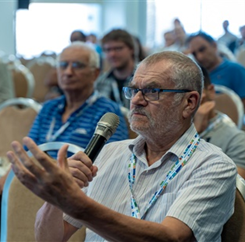
Luiz Mafra (Brazil)
Luiz Mafra Jr. is an Associate Professor at the Federal University of Paraná State, in Brazil, where he leads a research group at the Microalgae Laboratory since 2010. Over the past 20 years, he has been working on research subjects related to Harmful Algal Blooms (HAB), including field assessments and laboratory experiments. His studies have covered different aspects of HAB ecology, toxin kinetics in different marine organisms, harmful algae physiology, shellfish biology and ecophysiology, analytical chemistry and ecotoxicity assays. First focusing on domoic acid-producing Pseudo-nitzschia species, especially during his Ph.D. studies at Dalhousie University (Halifax, Canada), he has recently expanded his investigations to toxic dinoflagellates, including Dinophysis spp. and several benthic species, helping policy-makers and management officers to improve seafood safety and aquaculture sustainability in Brazil. From 2013 to 2018, he has served as vice-president of the recently extinct Latin American Society for the Study of Harmful Algae (ALEAN). Currently, he is a member of the workgroup for the Study of Harmful Algal Blooms in South America (IOC-FANSA), and represents Brazil on the Intergovernmental Panel on Harmful Algal Blooms (IPHAB-IOC-UNESCO). As member of the ISSHA Council since 2018, he has actively and passionately contributed to foster the Society and to organize the past three ICHA editions.
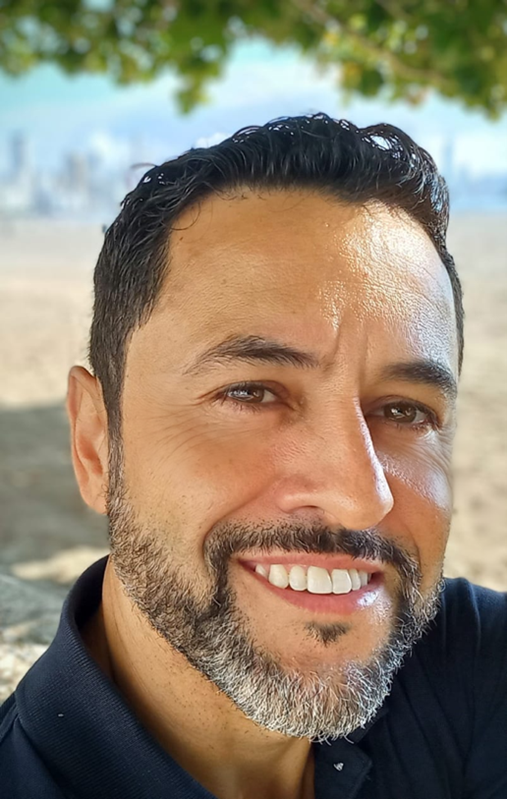
Shauna Murray (Australia)
Shauna Murray is an Associate Professor and core member of the Climate Change Cluster (C3) at University of Technology Sydney (UTS) where she leads the Seafood Safety: Marine Algal Biotoxins research program. She is particularly interested in the evolution and ecology of biotoxin production in marine microbial eukaryotes, and the evolution and systematics of the producing organisms. She moved to UTS in 2012 to take up an ARC Future Fellowship position, which has enabled her to build a research program focussing on developing novel genetic tools for biotoxin monitoring based on the unique genetic processes of dinoflagellates. She works closely with seafood regulatory authorities with the motivation to shape profitability and sustainability in the Australian aquaculture industry. She has published extensively in area of HABs and presented more than 100 papers in international peer reviewed journals and conferences.
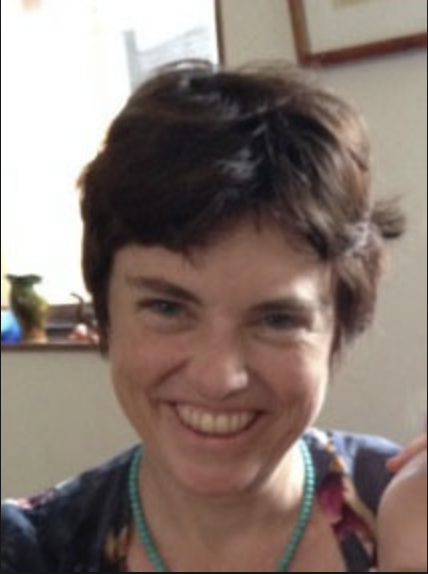
Antonella Penna (Italy)
Antonella Penna is a Full Professor of Ecology at the Department of Biomolecular Sciences, University of Urbino, Italy. As a marine ecologist and biologist, she is interested in molecular ecology dynamics of plankton and environmental interactions in coastal systems, with particular attention to the harmful phytoplankton species in relation to their proliferation. She develops molecular monitoring plans integrated with standard methodologies applied to the study of microalgal high biomass proliferation events noxious to humans and marine ecosystems. She collaborates with worldwide scientists and laboratories. She is active on the development of innovative molecular technologies for monitoring of HABs, marine ecosystem quality control and assessment through data analysis and ecological modelling applications. Actually, her activity is dedicated to the water discharge assessment and management solutions for reducing eutrophic impact in coastal areas in the Mediterranean Sea. Her outstanding research contributed numerous articles in International impacted journals. She is the President of Italian Marine Biology Society, past member of board of Italian Ecology Society, member of consultant of Exotic Species Committee of the Ministry of Agriculture, Food and Forestry. She has been a member of ISSHA since the beginning of her career from 1995.
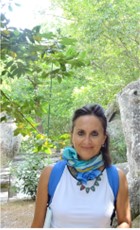
Mary Carmen Ruiz de la Torre (Mexico)
Mary Carmen Ruiz de la Torre, is a Mexican marine scientist specialized in the study of HAB. She completed her undergraduate studies in Oceanology at the Faculty of Marine Sciences of the Universidad Autónoma de Baja California (UABC), and her master and doctorate degrees in Marine Ecology at the Centro de Investigación Científica y de Educación Superior de Ensenada (CICESE). Since 2013, she has served as a full-time professor and researcher at the Faculty of Marine Sciences of the UABC, where she is a professor for undergraduate and postgraduate courses. Her research focus is centered on the dynamics of HABs and the associated ecology of harmful phytoplankton. She has mentored numerous students, supervising ten undergraduate and postgraduate theses. Currently, she is guiding two doctoral and two master's students in the Coastal Oceanography postgraduate program, addressing the impacts of HABs on coastal activities (such as desalination processes) and the relationship between local contamination and the presence and prevalence of HABs in the coastal zone. She is also the leader of two research projects on Harmful Algal Blooms, funded by CONACyT (Consejo Nacional de Ciencia y Tecnología). Her commitment to her research has earned her recognition as a member of the Sistema Nacional de Investigadores and a PRODEP profile (Educational recognition by the council in education and undergraduate programs in Mexico). She has authored publications in renowned indexed journals, including JGR, as well as book chapters and articles for public outreach. Her dedication to the study of HAB is evident through her leadership as President of the Mexican Society for the Study of Harmful Algal Blooms during two terms, from 2013 to 2015 and from 2015 to 2017. She is also a founding member of the academic technical committee of the CONACyT Thematic Network for the Study of Harmful Algal Blooms (RedFAN), as well as an ISSHA member. She has organized national and international events related to HABs (including the virtual 19th ICHA Mexican conference), international courses, fostering collaboration and knowledge exchange. She is actively engaged with local aquaculture and monitoring programs, such as the State Committee for Aquatic Health and Safety and contributes to monitoring efforts for harmful species in the region in collaboration with the Mexican navy at Baja California and CICESE. Currently, Mary Carmen is part of the monitoring network for the project "Addressing the Issues Associated with Harmful Algal Blooms in Baja California: Integrating Knowledge into Socio-environmental and Economic Needs." Her dedication to advancing our understanding of HAB in Mexican coasts and her commitment to address their society and environmental impacts make her a valuable asset to the ISSHA international association.
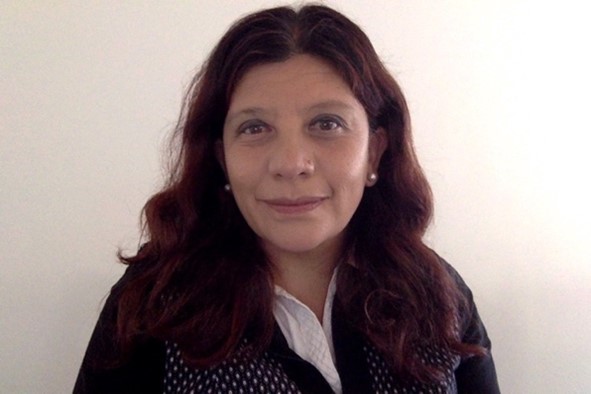
Toshiyuki Suzuki (Japan)
Toshiyuki Suzuki received his Ph.D. degree in Chemistry of Marine Products from Hokkaido University in 1993. He joined the Tohoku National Fisheries Research Institute in 1993. In 1998-1999, he was invited as a visiting scientist at the Cawthron Institute in New Zealand. In 2002, he joined the National Research Council of Canada’s Institute for Marine Biosciences as a visiting scientist. In 2008, he joined the National Research Institute of Fisheries Science, which is now part of the National Research and Development Agency of Japan. He currently serves as the director of the Environment and Fisheries Applied Techniques Research Department at the National Research and Development Agency of Japan. Since 2010, he has led a marine toxin and food hygiene research group in various leadership positions.
Since 2014, he has held the position of Guest Professor at Tokyo University of Marine Science and Technology. He has also served as an expert on the Food Safety Commission of Japan since 2013. Between 2004 and 2022, he was a panel member of the United States-Japan Cooperative Program on the Development and Utilization of Natural Resources, specifically on the Toxic Microorganisms Joint Panel.
His research focuses on the development of analytical methods for marine toxins and the metabolism of marine toxins in animals. Recently, he has been involved in the development of internationally certified reference materials for DSP and PSP, including enantiomeric non-toxic saxitoxin.
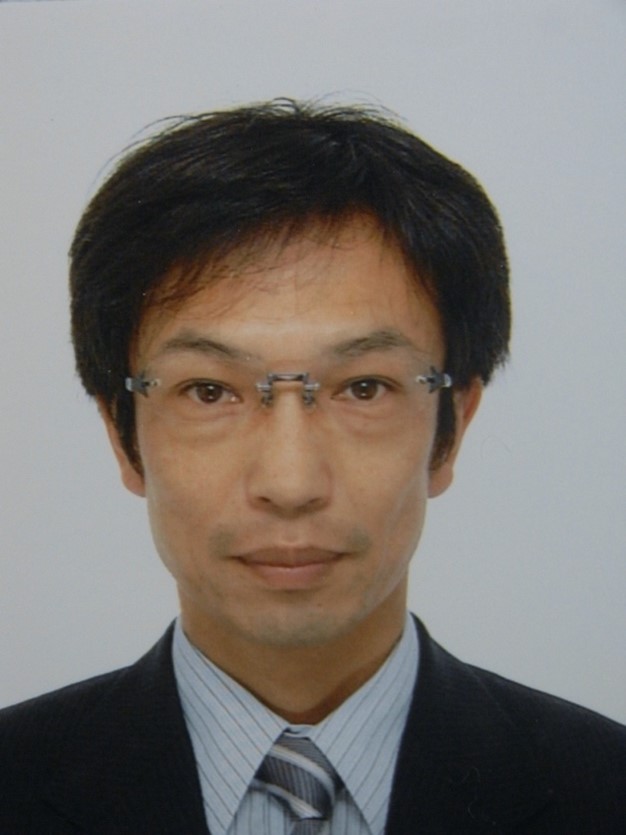
Student representative Carolin Peter (Sweden)
Carolin Peter is the current student representative on the council, focusing on the management of the ISSHA website. She is doing her PhD at the Linnaeus university in Kalmar, Sweden, where she assesses the composition of the phytoplankton community in the southern Baltic with particular attention to the influence of different nitrogen species. This includes working with the toxic filamentous cyanobacteria Nodularia spumigena. Her first dive into toxic algae was during her bachelor’s, when she assessed the composition of yessotoxin analogues in different Lingulodinium polyedra strains and she has been interested in this topic ever since.
